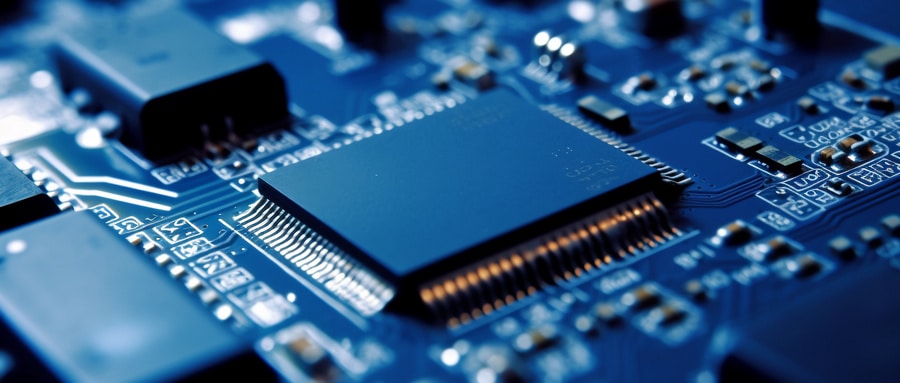Mastering the Intricacies of Microwave PCB Design: Solutions, Techniques and Future Directions
As we move into an age of high-speed and high-frequency applications, the popularity and necessity of Microwave Printed Circuit Boards (PCBs) has seen an exponential surge. Every industry, be it telecomm, automotive, medical or aerospace is rapidly adopting microwave PCBs into their technological framework and emphasizing their importance.
Chapter 1: Examining Microwave PCBs
Microwave PCBs, an emerging subclass of high-frequency PCBs, have quickly become the backbone of wireless communication systems and radar applications alike. Operating at frequencies ranging from 1GHz to 100GHz present unique challenges due to impedance mismatches and radiation losses; here we examine ways of mitigating them while still maintaining optimal performance.
Chapter 2: Building Blocks & Layer Stack-ups
Material selection and stack-up arrangement are of utmost importance in creating successful microwave PCB designs. A comprehensive analysis of suitable materials, including PTFE (Teflon), ceramics, and their hybrid versions as well as optimal layer stack-up approaches for different applications is presented here.
Chapter 3: Next Steps and Design Strategies
Designing a microwave PCB can be a formidable task, given the complexity of signal integrity at high frequencies. Achieve success requires meticulous trace routing, ground plane considerations and component placement strategies; herein we discuss essential strategies that ensure successful designs for microwave PCBs.
Chapter 4: Manufacturing Techniques for Precision Production
Manufacturing high-frequency boards such as microwave PCBs is often complex and delicate work. Selecting the appropriate manufacturer who can guarantee precision and quality checks such as controlled impedance tests and X-ray inspections is paramount to their successful implementation.
Chapter 5: Evolving Trends and Innovative Techniques in Microwave PCBs
As technology evolves, demand for faster and higher-frequency applications increases exponentially. We will explore both the opportunities and challenges posed by 5G technology, IoT connectivity and AI for Microwave PCBs in this segment.

As you would have noted, Microwave PCB design requires meticulousness and precision that goes far beyond standard PCB manufacturing. But these challenges also create ample opportunities for innovation that advance us toward an ever-evolving tech future. By employing suitable methods, materials, and manufacturing partners, mastery of Microwave PCBs should not be an implausible thought process.
By following the guidelines outlined in this comprehensive piece, professionals and hobbyists alike can confidently navigate the waters of high-frequency circuit design with confidence. Here’s to creating resilient systems that can withstand both current and future challenges!
Knowledge is power; let this piece serve as your gateway into the vibrant world of Microwave PCBs and let innovation unfold before your very eyes!
FAQ:
- Q: What is a Microwave Printed Circuit Board?
A: A microwave printed circuit board is used for circuits that operate at frequencies in the microwave range (1 GHz and above), and they are designed to minimize signal loss and maintain signal integrity at those high frequencies. - Q: What materials are used for Microwave Printed Circuit Boards?
A: Special materials, like Teflon, Rogers, and FR-4, are used because they have low dielectric losses, a stable dielectric constant, and exhibit less signal degradation. - Q: What applications typically use Microwave Printed Circuit Boards?
A: These PCBs are typically used in radar systems, mobile phone base stations, antennas, and other high-frequency electronics within the wireless telecommunications, automotive, and aerospace industries. - Q: What are the challenges in designing and manufacturing Microwave Printed Circuit Boards?
A: Formulating and maintaining the consistency of dielectric constant and controlling impedance matching are key challenges. Use of high-precision equipment and design tools are necessary. - Q: How is signal loss minimized in Microwave Printed Circuit Boards?
A: By choosing appropriate materials that have low dielectric constant and losses, and by ensuring controlled impedance design. - Q: Are Microwave Printed Circuit Boards more expensive than regular PCBs?
A: Yes, due to the use of specialty high-frequency materials and the increased manufacturing precision required, they can be more expensive than standard PCBs. - Q: How is the performance of a Microwave Printed Circuit Board tested?
A: Networks analyzers are often used to test the performance of microwave PCBs, including parameters such as return loss, insertion loss, and group delay. - Q: Can a Microwave Printed Circuit Board be multilayer?
A: Yes, but more care must be taken in the design and fabrication processes to maintain signal integrity across layers. - Q: How does temperature affect the performance of Microwave PCBs?
A: Temperature changes can cause variations in the dielectric constant, leading to performance degradation. It’s crucial to choose materials and design strategies that mitigate these effects. - Q: How can I enhance the lifespan of my Microwave PCB?
A: Proper design, use of quality materials, and taking care to avoid conditions that could damage the board (e.g., excessive heat) can all help to prolong the lifespan of a Microwave PCB.























